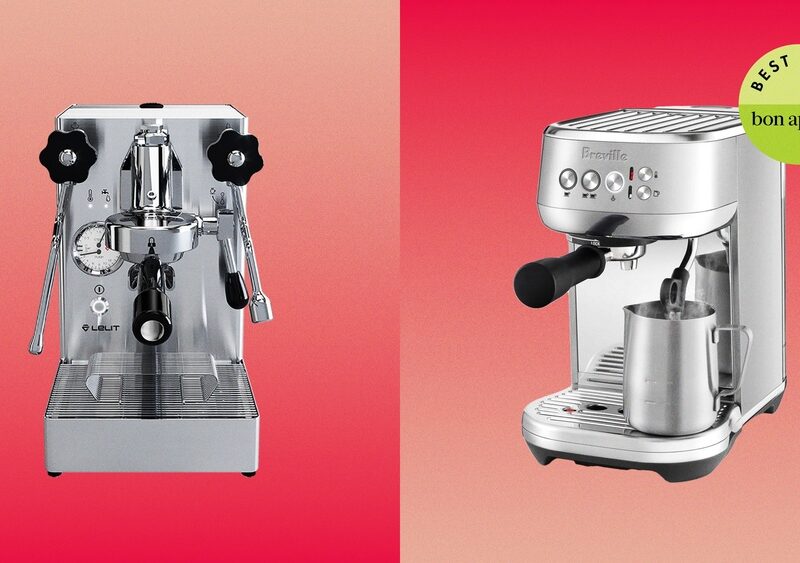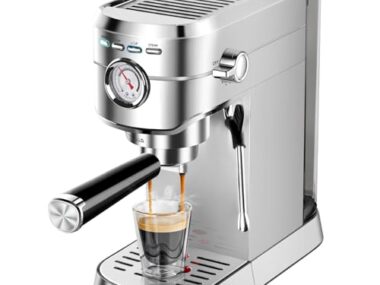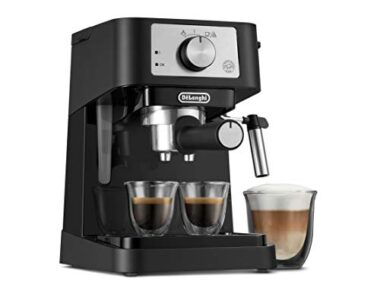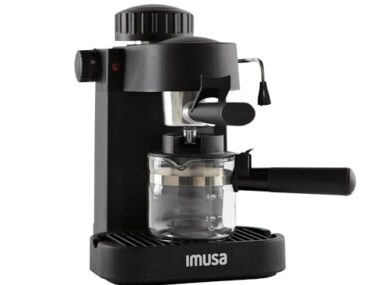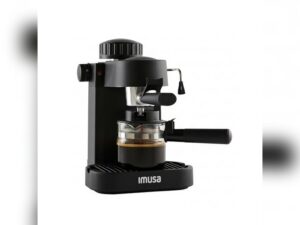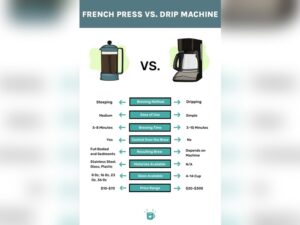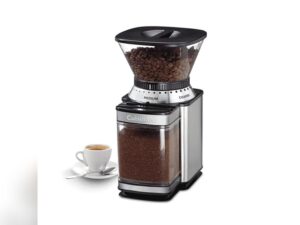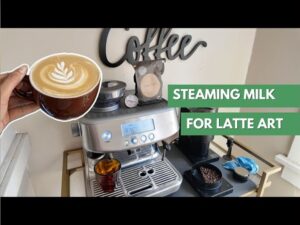You want a coffee machine that fits your taste, lifestyle, and budget perfectly. But with so many options out there, it can feel overwhelming to pick the right one.
What brewing method suits you best? How important are features like milk frothers or “keep warm” settings? And what about size—will it fit your kitchen space? You’ll discover simple, clear steps to help you find the coffee machine that matches your personal coffee habits.
By the end, you’ll feel confident making a choice that turns your daily coffee into a satisfying ritual you look forward to every morning. Keep reading to unlock the secrets of picking the perfect coffee machine for you.

Credit: www.williams-sonoma.com
Choosing Your Brew Method
Choosing your brew method shapes your coffee experience every day. The right method matches your taste, time, and effort preferences. Each brew style highlights different flavors and strengths. Understand the main brewing options to pick a machine that fits your lifestyle and palate.
Drip Coffee Machines
Drip coffee machines are popular for their ease and consistency. They brew multiple cups at once, ideal for families or offices. You add ground coffee and water, then the machine heats and drips water over the grounds. The result is a smooth, mild coffee.
These machines often have timers and warming plates. They suit people who want a quick and hands-off brew. Drip coffee is less intense than espresso but strong enough for daily energy.
Espresso Machines
Espresso machines make rich, concentrated coffee by forcing hot water through finely ground beans. This method produces a thick, bold shot with crema on top. Espresso is the base for many drinks like lattes and cappuccinos.
These machines require more skill and time but offer control over the brew. Some models have built-in grinders and milk frothers. Espresso lovers enjoy its strong flavor and quick preparation.
French Press And Pour Over
French press uses steeping to extract full flavor and oils from coffee grounds. It produces a rich, heavy-bodied cup. The process is simple: add coffee and hot water, wait, then press the plunger down.
Pour over involves pouring hot water slowly over coffee grounds in a cone filter. It highlights clarity and brightness in the coffee. Both methods need attention but reward you with fresh, flavorful coffee.
Single-serve Pods
Single-serve pod machines offer fast, clean coffee without measuring or grinding. You insert a pod, press a button, and get one cup in minutes. This method is perfect for busy individuals or small households.
Pods come in many flavors and coffee types. The downside is more waste and less control over strength. Pods suit those who want convenience and variety with minimal cleanup.
Evaluating Machine Features
Choosing the right coffee machine means checking its features carefully. Different functions can improve your coffee experience. Some features save time, others help make coffee just how you like it. Understanding these features helps you pick the best machine for your needs.
Built-in Milk Frothers
Milk frothers create creamy foam for lattes and cappuccinos. A built-in frother saves space and effort. It lets you make fancy coffee drinks at home. Some frothers work automatically, others need manual control. Check if the frother suits your skill and drink preferences.
Programmable Settings
Programmable settings let you customize your coffee brewing. You can set brew strength, cup size, and start time. This feature is great for busy mornings. It ensures coffee is ready when you want it. Look for machines with easy-to-use programming options.
Keep Warm Functions
Keep warm functions keep coffee hot after brewing. This feature prevents coffee from cooling too fast. It is useful if you drink slowly or serve multiple people. Some machines have timers to turn off the warming plate. Choose a machine with a reliable and safe keep warm option.
Grinder Integration
Grinder integration means the machine can grind fresh beans. Freshly ground beans improve coffee flavor and aroma. Built-in grinders save space and reduce clutter. Some grinders have adjustable settings for coarseness. A machine with grinder integration is ideal for fresh coffee lovers.
Considering Size And Capacity
Choosing the right coffee machine depends a lot on its size and capacity. These factors affect where the machine fits and how much coffee it can brew at once. Understanding your space and coffee needs helps pick a machine that works best.
Countertop Space Needs
Measure the area where you want to place the coffee machine. Some machines are compact and fit small spaces well. Others are larger and need more room. A machine too big may clutter your kitchen. Choose one that fits comfortably without crowding your countertop.
Batch Size Options
Think about how much coffee you usually drink. Single-serve machines brew one cup at a time. They save time for solo drinkers. Machines with larger batch sizes serve multiple cups in one brew. These suit families or offices better. Pick a batch size that matches your daily coffee habits.
Water Reservoir Capacity
The water tank size affects how often you refill it. Small reservoirs need frequent refills, which can be inconvenient. Large reservoirs let you brew many cups before refilling. Check the capacity to match your coffee drinking frequency. A bigger tank suits heavy coffee drinkers well.

Credit: www.williams-sonoma.com
Pressure And Extraction
Pressure and extraction play a key role in brewing the perfect espresso. The right pressure ensures water passes through the coffee grounds evenly. This process extracts the rich flavors and aroma that define a great cup.
Understanding how pressure works helps you pick a coffee machine that suits your taste. It affects the speed of extraction and the quality of the final brew. Let’s explore the main aspects of pressure in espresso machines.
Bar Pressure Explained
Bar pressure measures the force pushing water through coffee grounds. One bar equals the atmospheric pressure at sea level. Most espresso machines advertise pressure in bars to show their power.
Higher bars do not always mean better coffee. The right pressure forces water evenly through the coffee puck. This balance helps extract oils and flavors without bitterness or sourness.
Pump Vs Extraction Pressure
The pump creates initial pressure to push water into the coffee. Extraction pressure is the actual pressure during brewing. It depends on the coffee grind, tamping, and machine settings.
Pump pressure can be higher than extraction pressure. This difference helps overcome the resistance of the coffee grounds. A stable pump ensures consistent pressure for every shot.
Optimal Pressure For Espresso
The ideal pressure for espresso is around nine bars. This level extracts rich flavor and a creamy crema layer. Pressures too high can cause over-extraction, making coffee bitter.
Pressures below eight bars may under-extract, resulting in weak or sour taste. Machines that maintain steady pressure produce better and more consistent espresso.
Over-pressure Valve Role
The over-pressure valve (OPV) controls maximum pressure in the machine. It prevents pressure from rising above the set limit. This protects the machine and avoids bitter coffee.
OPVs help keep extraction pressure stable. They adjust pressure based on the coffee puck’s resistance. A good valve improves the taste and extends the machine’s life.
Coffee-to-water Ratios
Understanding coffee-to-water ratios is key to brewing a great cup. The ratio controls coffee strength and flavor clarity. Using the right amount of coffee and water creates balance. It helps avoid weak or bitter coffee. Every coffee machine and brewing method may need ratio tweaks. Learning these basics guides you to better coffee every time.
Golden Ratio Basics
The golden ratio for coffee is usually 1:16. This means one part coffee to sixteen parts water. For example, 20 grams of coffee with 320 ml of water. This ratio delivers a balanced taste and proper extraction. It works well for drip coffee and many other methods. Start with this ratio as your baseline. Adjust later based on taste preferences.
Adjusting Strength And Flavor
To make coffee stronger, add more coffee or use less water. For lighter coffee, use less coffee or more water. Small changes can greatly affect flavor. Experiment with small adjustments to find your ideal taste. Note that grind size and brew time also impact flavor. Make ratio changes slowly to avoid big surprises.
Using A Kitchen Scale
A kitchen scale helps measure coffee and water accurately. Measuring by weight is more precise than using volume. Scales ensure consistency in every brew. Place your coffee and water containers on the scale for easy tracking. Accurate measurement improves flavor control. It helps you replicate your favorite cup each time.
Brew Method Impact
Different brewing methods need different coffee-to-water ratios. Espresso uses a much lower ratio, around 1:2 to 1:3. French press uses a coarser grind and about 1:15 ratio. Pour-over often sticks close to the golden ratio. Cold brew requires more coffee and longer steeping time. Know your brew method’s ideal ratio for best results.
Maintenance And Durability
Choosing the right coffee machine means thinking about maintenance and durability. These factors affect how long your machine lasts and how well it works over time. A machine that is easy to clean and built with strong materials will save time and money. Paying attention to filter replacement, build quality, and warranty also helps keep your coffee machine in good shape for years.
Cleaning Requirements
Regular cleaning keeps your coffee tasting fresh. Machines with simple parts are easier to clean. Some models have automatic cleaning programs. Remove coffee grounds and wipe surfaces after each use. Avoid buildup of oils and minerals that harm the machine.
Filter Replacement
Filters trap impurities and improve water quality. Check how often the filter needs changing. Some machines use reusable filters, others disposable. Changing filters on time prevents clogging and keeps coffee flavor pure. Look for clear instructions on filter care.
Build Quality
Strong materials resist wear and tear. Stainless steel and high-grade plastic last longer than cheap parts. Solid buttons and knobs avoid breaking. A well-built machine stays stable and quiet during brewing. Quality build reduces repairs and replacements.
Warranty And Support
A good warranty protects your purchase. Check how long the warranty lasts and what it covers. Responsive customer support helps solve problems fast. Access to spare parts ensures your machine can be fixed easily. Choose brands known for reliable service.
Budget And Brand Choices
Choosing the right coffee machine means balancing your budget with brand preferences. This step helps narrow down options and find a machine that fits your needs and wallet. Understanding price ranges and brand reputations makes the buying process simpler.
Price Ranges
Coffee machines come in many price points. Basic models start around $50 and offer simple brewing features. Mid-range machines, costing $100 to $300, usually add more functions and better build quality. High-end machines can cost $500 or more. These often have advanced technology and durability. Decide your budget before shopping to focus on suitable machines.
Reputable Brands
Choose brands known for quality and reliability. Well-established companies often provide better customer support and warranties. Popular brands like Breville, DeLonghi, and Cuisinart have positive reputations. They offer a wide range of models for different budgets. Avoid unknown brands with little information or reviews.
Value For Money
Look beyond the price tag. A cheap machine might cost less upfront but may break sooner. An expensive machine might last longer and make better coffee. Consider the features you really need. Machines with programmable settings, grinders, or milk frothers add convenience. Balance cost with the benefits each machine offers.
User Reviews
Read reviews from real users to learn about performance and durability. Honest feedback shows common issues and strengths. Check multiple sources like retail sites and forums. Focus on reviews that mention the features important to you. User experiences help avoid poor choices and find a machine that fits your lifestyle.

Credit: www.bbcgoodfood.com
Frequently Asked Questions
How Do I Choose The Right Coffee Machine?
Choose a coffee machine based on your preferred brewing method, batch size, and available kitchen space. Check for features like milk frothers or keep-warm functions. Prioritize ease of use and maintenance to match your lifestyle and taste preferences.
Is 15 Or 20 Bar Better For An Espresso Machine?
A 15-bar espresso machine provides optimal pressure for balanced extraction and flavor. A 20-bar machine often uses extra pressure as a marketing tactic. Choose 15 bars for consistent, quality espresso.
What Is The 2 1 Rule For Espresso?
The 2:1 rule for espresso means extracting twice the weight of liquid espresso compared to dry coffee grounds. For example, 18g grounds yield 36g espresso. This ratio balances strength and flavor for a classic espresso shot. Adjust ratios to taste for desired intensity and extraction.
What Is The Golden Rule For Coffee Brewing?
The golden rule for coffee brewing is to maintain a balanced coffee-to-water ratio. Use a kitchen scale for accuracy. Adjust the ratio to match your taste preference. This ensures optimal flavor extraction and prevents bitterness or weakness in your brew.
Conclusion
Choosing the right coffee machine depends on your personal taste and needs. Think about how you like your coffee and how much time you want to spend making it. Small kitchens need compact machines, while bigger ones can fit larger models.
Extra features like milk frothers or timers add convenience but are not always necessary. Focus on ease of use, cleaning, and durability to get the best value. A good coffee machine makes your daily routine more enjoyable and helps you brew great coffee at home.
